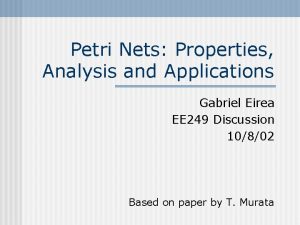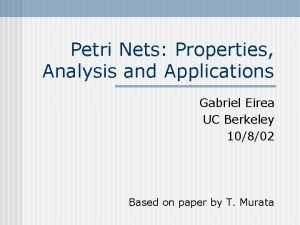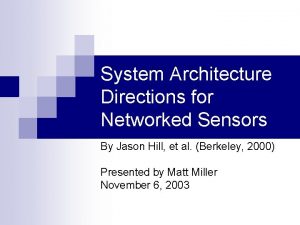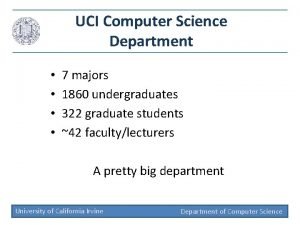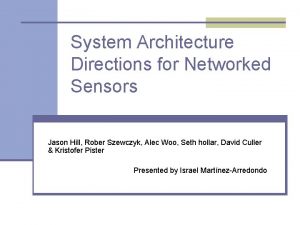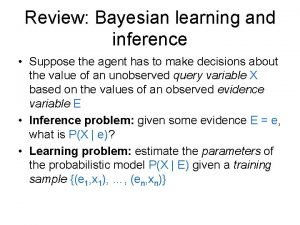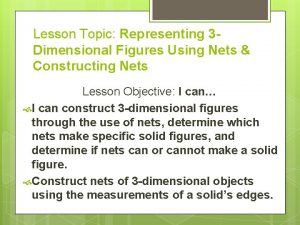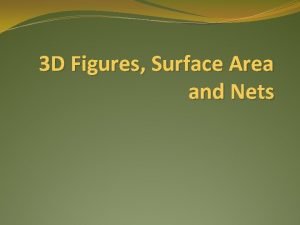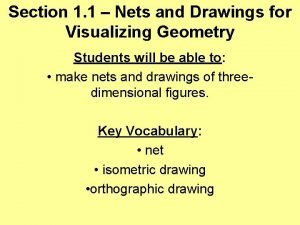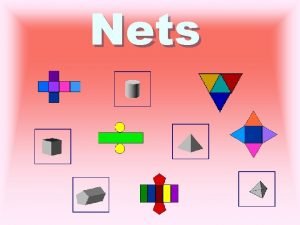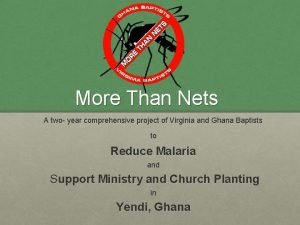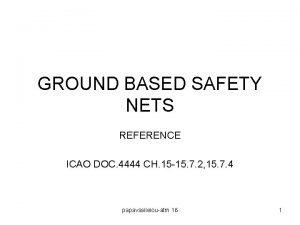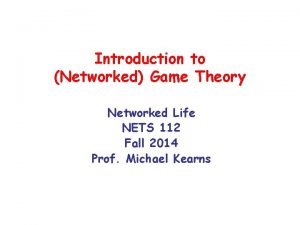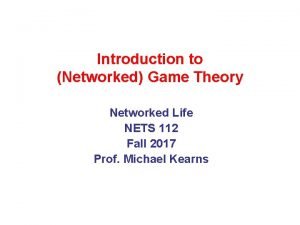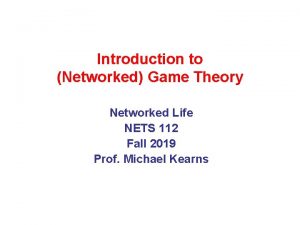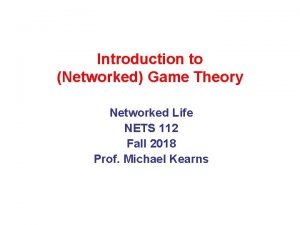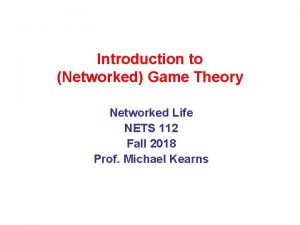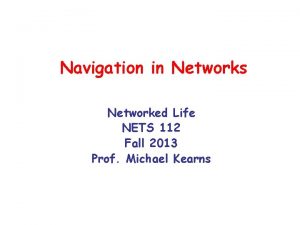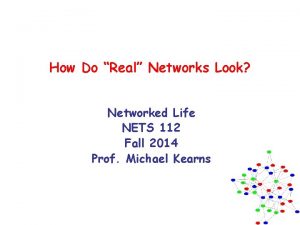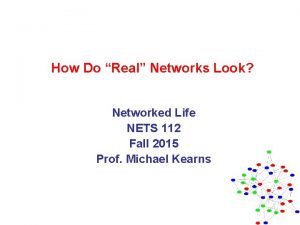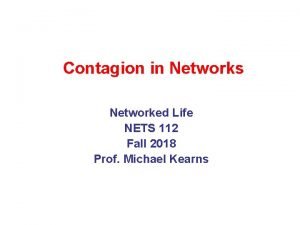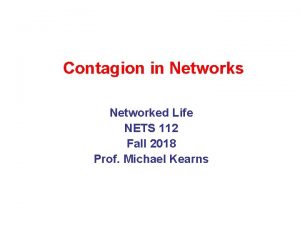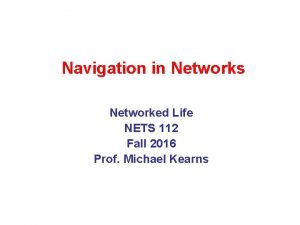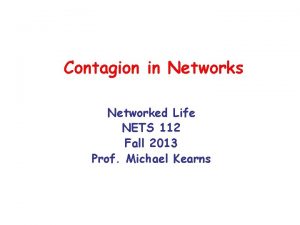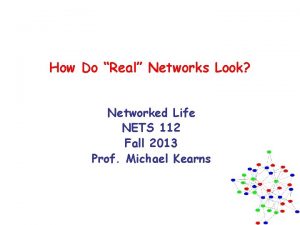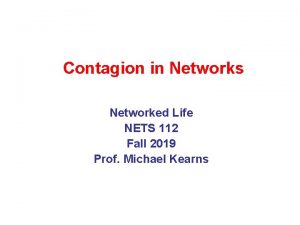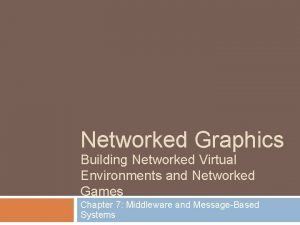Structural Properties of Networks Introduction Networked Life NETS
























- Slides: 24

Structural Properties of Networks: Introduction Networked Life NETS 112 Fall 2015 Prof. Michael Kearns

Networks: Basic Definitions • A network (or graph) is: – a collection of individuals or entities, each called a vertex or node – a list of pairs of vertices that are neighbors, representing edges or links • Examples: – vertices are mathematicians, edges represent coauthorship relationships – vertices are Facebook users, edges represent Facebook friendships – vertices are news articles, edges represent word overlap • Networks can represent any binary relationship over individuals • Often helpful to visualize networks with a diagram • But to us, the network is the list of edges, not the visualization – same network has many different visualizations

Networks: Basic Definitions • We will use N to denote the number of vertices in a network • Number of possible edges: • The degree of a vertex is its number of neighbors

Networks: Basic Definitions • The distance between two vertices is the length of the shortest path connecting them • This assumes the network has only a single component or “piece” • If two vertices are in different components, their distance is undefined or infinite • The diameter of a network is the average distance between pairs • It measures how near or far typical individuals are from each other

Networks: Basic Definitions • So far, we have been discussing undirected networks • Connection relationship is symmetric: – if vertex u is connected to vertex v, then v is also connected to u – Facebook friendship is symmetric/reciprocal • Sometimes we’ll want to discuss directed networks – I can follow you on Twitter without you following me – web page A may link to page B, but not vice-versa • In such cases, directionality matters and edges are annotated by arrows


Erdös number 0 --1 person Erdös number 1 --- 504 people Erdös number 2 --- 6593 people Erdös number 3 --- 33605 people Erdös number 4 --- 83642 people Erdös number 5 --- 87760 people Erdös number 6 --- 40014 people Erdös number 7 --- 11591 people Erdös number 8 --- 3146 people Erdös number 9 --- 819 people Erdös number 10 --- 244 people Erdös number 11 --- 68 people Erdös number 12 --- 23 people Erdös number 13 --5 people The median Erdös number is 5; the mean is 4. 65, and the standard deviation is 1. 21.

Illustrating the Concepts • Example: scientific collaboration – – – – vertices: math and computer science researchers links: between coauthors on a published paper Erdos numbers : distance to Paul Erdos was definitely a hub or connector; had 507 coauthors MK’s Erdos number is 3, via Kearns Mansour Alon Erdos how do we navigate in such networks? how does network distance relate to the real world?


Measures of Vertex “Importance” • • Exogenous: famous/accomplished/influential/etc individuals “Hubs”: high-degree individuals Centrality: individuals in the “middle” of the network How are these related?

most central squash player, local network

Math Collaboration Degree Distribution • x axis: number of neighbors/coauthors (degree) • y axis: number of mathematicians with that degree

Squash Network Degree Distribution • x axis: number of opponents (degree) • y axis: number of players with that degree

Illustrating the Concepts • Example: “real-world” acquaintanceship networks – – vertices: people in the world links: have met in person and know last names hard to measure let’s examine the results of our own last-names exercise

Filipe Sinisterra # of individuals Jeff Kessler # of last names known average = 30. 2 std = 22. 1 min = 1 max = 110

# of individuals India. Sohn Yaffe Sandra average = 24. 6 std = 17. 7 min = 1 max = 94 # of last names known

# of last names known Sandra Sohn Andrew Lum # of individuals average = 28 std = 20. 6 min = 1 max = 90

# of last names known Jason Chou Gaoxiang Hu # of individuals average = 26. 6 min = 2 max = 114

# of last names known Nechemya Kagedan # of individuals Geoffrey Kiderman average = 30. 7 min = 0 max = 113

Danielle Greenberg Allison Mishkin James Katz Chester Chen average = 31. 3, std = 22. 0 min = 2 max = 101

Structure, Dynamics, and Formation

Network Structure (Statics) • Emphasize purely structural properties – size, diameter, connectivity, degree distribution, etc. – may examine statistics across many networks – will also use the term topology to refer to structure • Structure can reveal: – – community “important” vertices, centrality, etc. robustness and vulnerabilities can also impose constraints on dynamics • Less emphasis on what actually occurs on network – web pages are linked… but people surf the web – buyers and sellers exchange goods and cash – friends are connected… but have specific interactions

Network Dynamics • Emphasis on what happens on networks • Examples: – – spread of disease/meme/fad in a social network computation of a proper coloring computation in the brain spread of wealth in an economic network • Statics and dynamics often closely linked – rate of disease spread (dynamic) depends critically on network connectivity (static) – distribution of wealth depends on network topology • Dynamics of transmission most often studied • What about dynamics with self-interest, deliberation, rationality?

Network Formation • Why does a particular structure emerge? • Plausible processes for network formation? • Generally interested in processes that are – – – decentralized distributed limited to local communication and interaction “organic” and growing consistent with (some) measurement • The Internet versus traditional telephony
 Petri nets properties analysis and applications
Petri nets properties analysis and applications Petri y gabriel
Petri y gabriel Datagram switching vs virtual circuit switching
Datagram switching vs virtual circuit switching Backbone networks in computer networks
Backbone networks in computer networks Networked insurance agents
Networked insurance agents Networked and distributed operating system
Networked and distributed operating system System architecture directions for networked sensors
System architecture directions for networked sensors Unit 32 networked system security
Unit 32 networked system security Networked system solutions
Networked system solutions Fully networked vehicle
Fully networked vehicle Airinet
Airinet Kategori dari embedded system
Kategori dari embedded system Business information management uci
Business information management uci System architecture directions for networked sensors
System architecture directions for networked sensors Networked digital library of theses and dissertations ndltd
Networked digital library of theses and dissertations ndltd Networked sensor array
Networked sensor array Bayes nets
Bayes nets Represent solid figures using nets
Represent solid figures using nets Partitioned semantic nets in artificial intelligence
Partitioned semantic nets in artificial intelligence Surface area using nets
Surface area using nets 1-1 practice nets and drawings for visualizing geometry
1-1 practice nets and drawings for visualizing geometry Nets of square pyramid
Nets of square pyramid Nets church planting
Nets church planting List the 4 nets for better internet searching
List the 4 nets for better internet searching Icao 4444
Icao 4444
